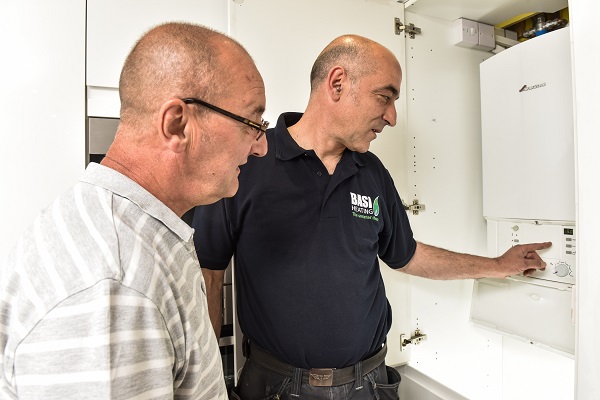
Every combi boiler has a pressure gauge, which is a small dial situated near the boiler controls. Your boiler pressure should be between 1 and 1.5 on the scale, and if the pressure drops below 1 your central heating may stop working.
Your boiler losing pressure is the most likely cause of a central heating breakdown. But it’s also luckily one of the most straightforward things to fix.
If you think your boiler has lost pressure but don’t feel confident fixing it yourself then call us on 0808 115 3994 and an engineer will come and take a look.
But if you’re feeling handy, follow these simple steps to re-pressurise your boiler:
1. Check the pressure gauge
If the dial is showing lower than 1 then it is too low and this is why you’re heating system has stopped working. You need to re-pressurise the system.
2. Turn off your system
Switch your heating off just to be safe.
3. Connect the filling loop
Check the pipework under your boiler. There will be two valves and a flexible silver pipe – or filling loop. Make sure each end of the filling loop is connected to either valve.
4. Release the valve to add cold water to your system
You are now ready to increase the pressure by adding water to your system. Slowly release the valve using the handle (or a screwdriver or filling key if required) and keep an eye on your pressure gauge.
5. Switch off the valves once you reach between 1-1.5
Once you’ve reached the required pressure, quickly switch off the valve.
6. Turn on your heating
Check your heating is now working as it should do again. If it isn’t, get in touch with an engineer to assess the breakdown.
If you are having to top up your pressure regularly – more than every year or so – you may have a leak in your system and it’s important to get this checked out professionally.
To get in touch in the event of a breakdown, call one of our friendly team on 0808 159 0738 or email enquiries@basiheating.com for more information.









